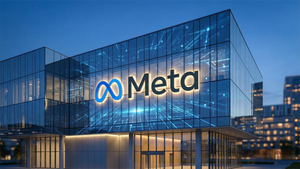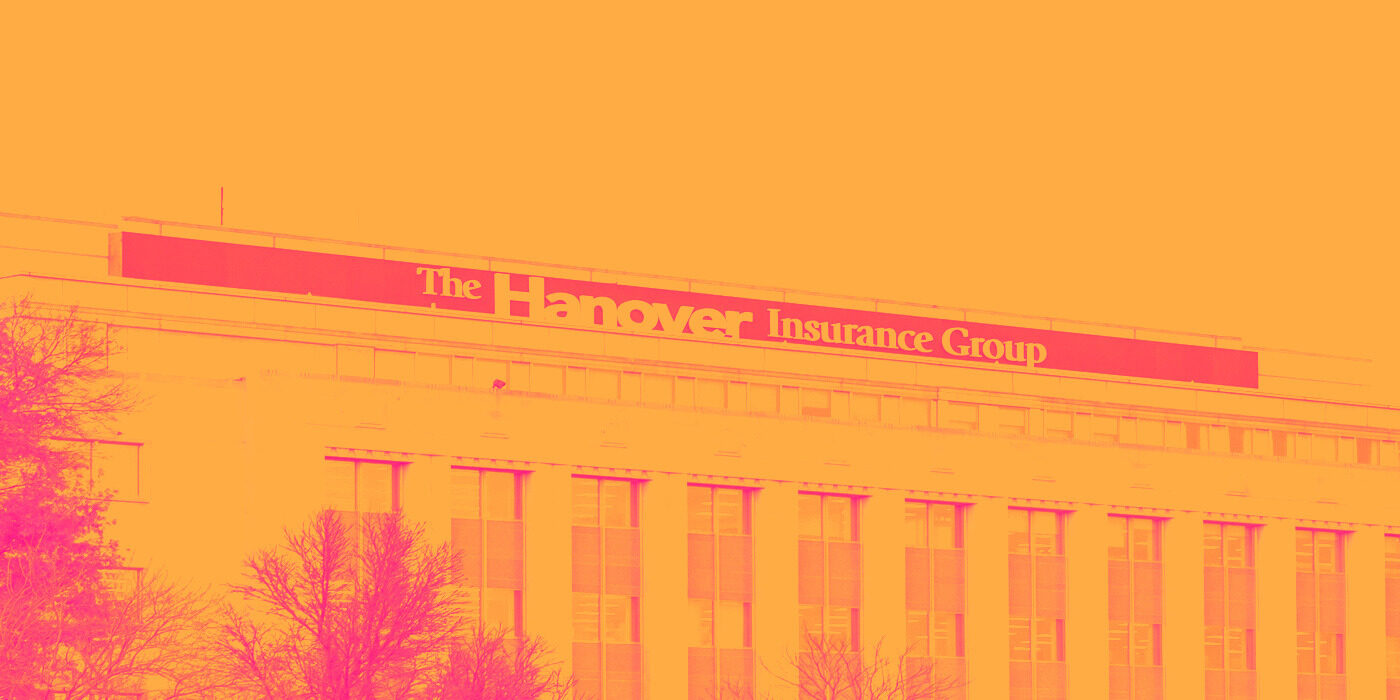
Property and casualty insurer The Hanover Insurance Group (NYSE: THG) fell short of the markets revenue expectations in Q3 CY2025, but sales rose 5.5% year on year to $1.67 billion. Its GAAP profit of $4.90 per share was 19.5% above analysts’ consensus estimates.
Is now the time to buy The Hanover Insurance Group? Find out by accessing our full research report, it’s free for active Edge members.
The Hanover Insurance Group (THG) Q3 CY2025 Highlights:
- Net Premiums Earned: $1.55 billion vs analyst estimates of $1.57 billion (4.8% year-on-year growth, 1.2% miss)
- Revenue: $1.67 billion vs analyst estimates of $1.68 billion (5.5% year-on-year growth, 0.6% miss)
- Combined Ratio: 91.1% vs analyst estimates of 93.7% (263.3 basis point beat)
- EPS (GAAP): $4.90 vs analyst estimates of $4.10 (19.5% beat)
- Book Value per Share: $96 vs analyst estimates of $101.15 (20.1% year-on-year growth, 5.1% miss)
- Market Capitalization: $6.04 billion
"Once again, our team put forth a very strong performance, not only achieving impressive financial results, but also affirming the effectiveness of our strategy and building on the positive momentum we've established across The Hanover," said John C. Roche, president and chief executive officer.
Company Overview
Founded in 1852 during a time when fire insurance was crucial for protecting businesses and homes, The Hanover Insurance Group (NYSE: THG) provides property and casualty insurance products through independent agents, serving individuals, small businesses, and mid-sized companies.
Revenue Growth
Insurance companies earn revenue from three primary sources: 1) The core insurance business itself, often called underwriting and represented in the income statement as premiums 2) Income from investing the “float” (premiums collected upfront not yet paid out as claims) in assets such as fixed-income assets and equities 3) Fees from various sources such as policy administration, annuities, or other value-added services. Unfortunately, The Hanover Insurance Group’s 6.4% annualized revenue growth over the last five years was mediocre. This was below our standard for the insurance sector and is a rough starting point for our analysis.
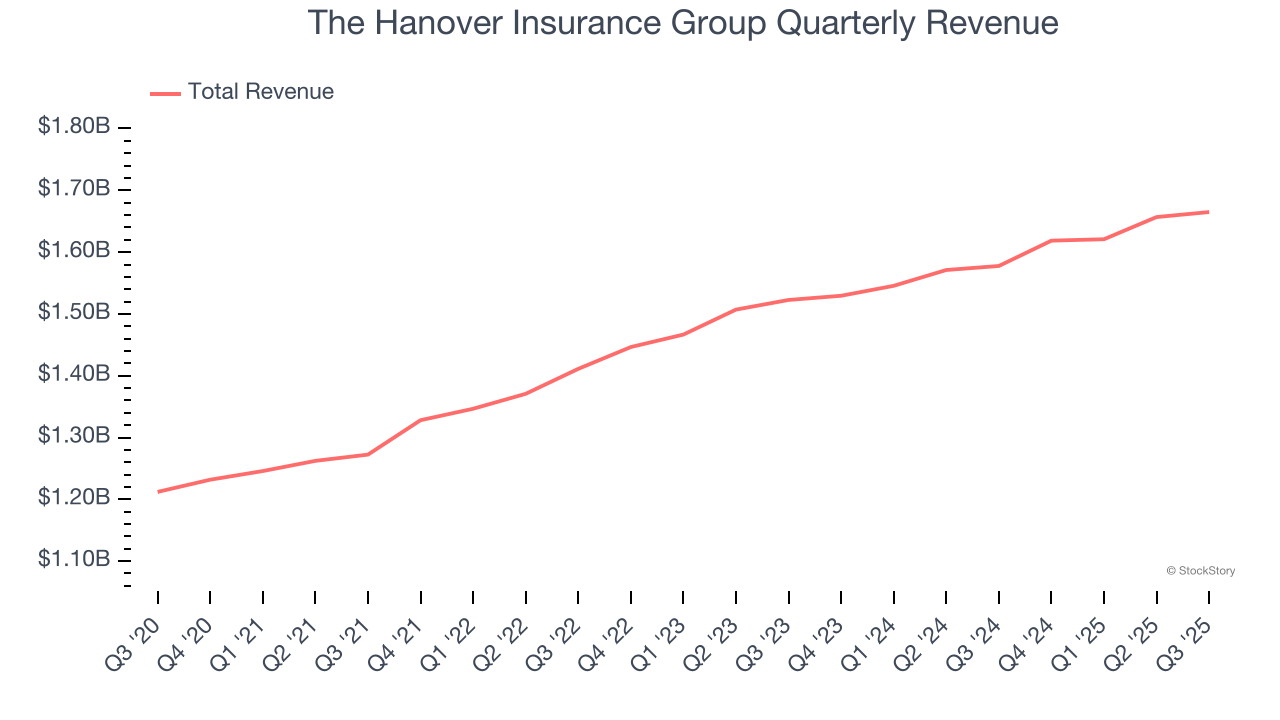
We at StockStory place the most emphasis on long-term growth, but within financials, a half-decade historical view may miss recent interest rate changes, market returns, and industry trends. The Hanover Insurance Group’s recent performance shows its demand has slowed as its annualized revenue growth of 5.1% over the last two years was below its five-year trend. 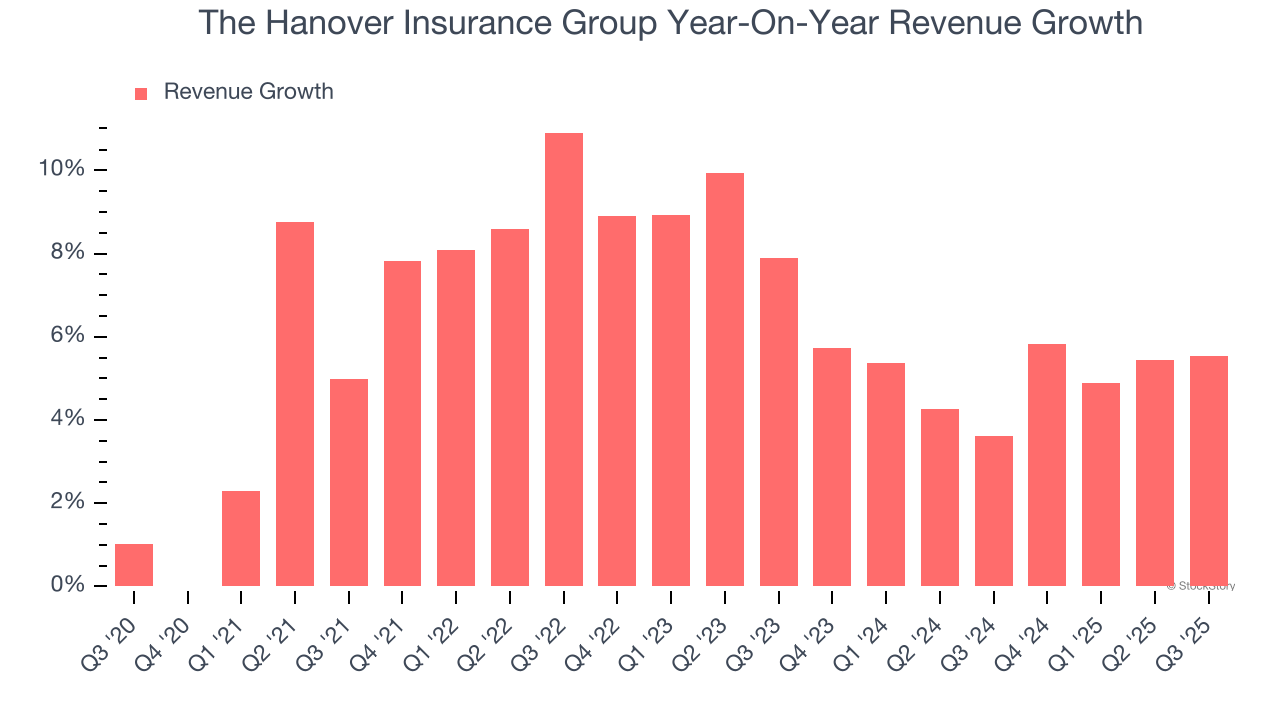 Note: Quarters not shown were determined to be outliers, impacted by outsized investment gains/losses that are not indicative of the recurring fundamentals of the business.
Note: Quarters not shown were determined to be outliers, impacted by outsized investment gains/losses that are not indicative of the recurring fundamentals of the business.
This quarter, The Hanover Insurance Group’s revenue grew by 5.5% year on year to $1.67 billion, missing Wall Street’s estimates.
Net premiums earned made up 93.7% of the company’s total revenue during the last five years, meaning The Hanover Insurance Group lives and dies by its underwriting activities because non-insurance operations barely move the needle.
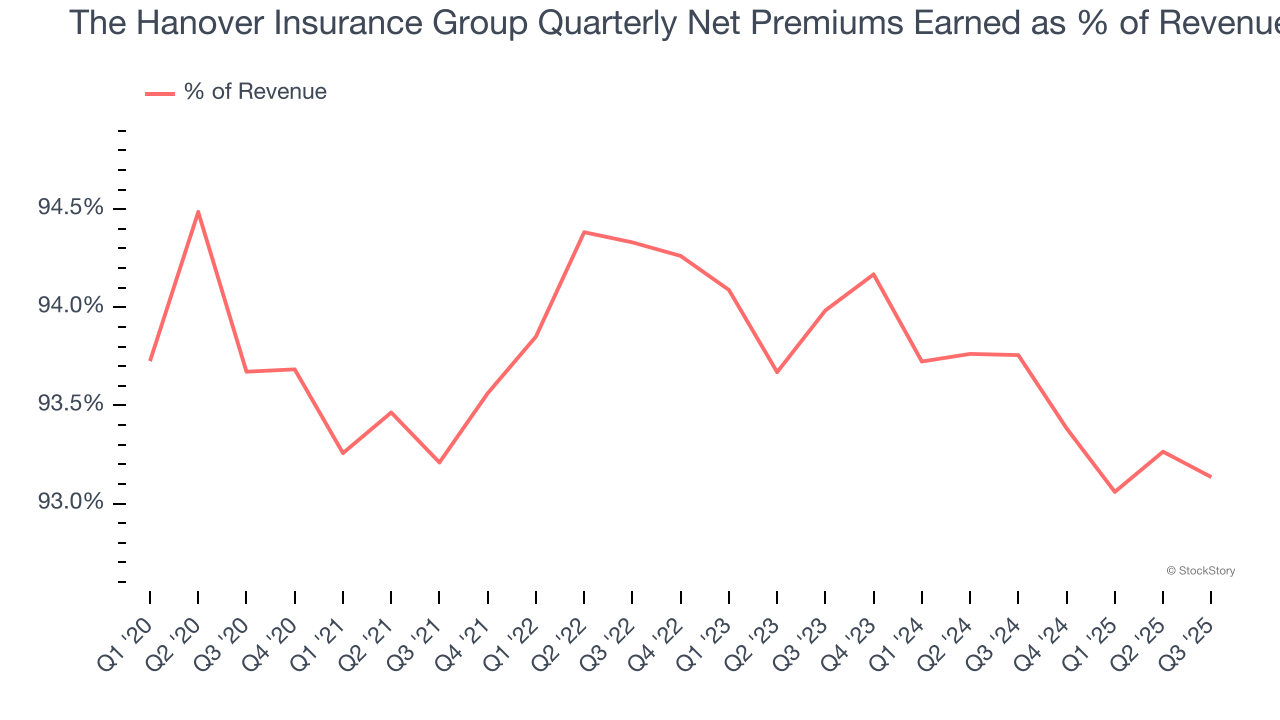
Net premiums earned commands greater market attention due to its reliability and consistency, whereas investment and fee income are often seen as more volatile revenue streams that fluctuate with market conditions.
Here at StockStory, we certainly understand the potential of thematic investing. Diverse winners from Microsoft (MSFT) to Alphabet (GOOG), Coca-Cola (KO) to Monster Beverage (MNST) could all have been identified as promising growth stories with a megatrend driving the growth. So, in that spirit, we’ve identified a relatively under-the-radar profitable growth stock benefiting from the rise of AI, available to you FREE via this link.
Book Value Per Share (BVPS)
Insurers are balance sheet businesses, collecting premiums upfront and paying out claims over time. Premiums collected but not yet paid out, often referred to as the float, are invested and create an asset base supported by a liability structure. Book value per share (BVPS) captures this dynamic by measuring these assets (investment portfolio, cash, reinsurance recoverables) less liabilities (claim reserves, debt, future policy benefits). BVPS is essentially the residual value for shareholders.
We therefore consider BVPS very important to track for insurers and a metric that sheds light on business quality because it reflects long-term capital growth and is harder to manipulate than more commonly-used metrics like EPS.
The Hanover Insurance Group’s BVPS grew at a sluggish 2.6% annual clip over the last five years. However, BVPS growth has accelerated recently, growing by 27.4% annually over the last two years from $59.11 to $96 per share.
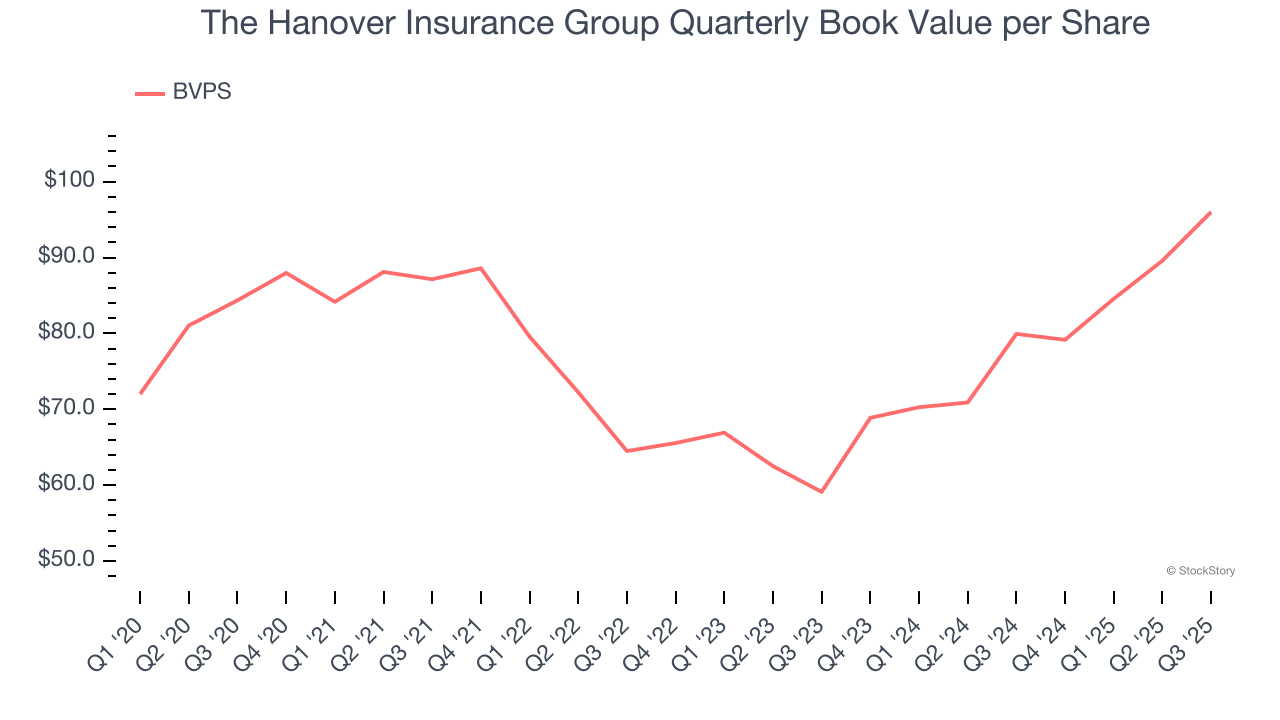
Over the next 12 months, Consensus estimates call for The Hanover Insurance Group’s BVPS to grow by 28.3% to $101.15, elite growth rate.
Key Takeaways from The Hanover Insurance Group’s Q3 Results
It was good to see The Hanover Insurance Group beat analysts’ EPS expectations this quarter. On the other hand, its book value per share missed and its net premiums earned fell slightly short of Wall Street’s estimates. Overall, this quarter could have been better. The stock remained flat at $167 immediately following the results.
Big picture, is The Hanover Insurance Group a buy here and now? What happened in the latest quarter matters, but not as much as longer-term business quality and valuation, when deciding whether to invest in this stock. We cover that in our actionable full research report which you can read here, it’s free for active Edge members.




